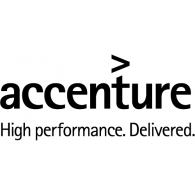AI Shopping Surges This Christmas As Consumers Show...
- 22.12.2025 10:05 am
Visa And Partners Complete Secure AI Transactions,...
- 19.12.2025 08:45 am
Provenir Launches AI Maturity Assessment And New Data...
- 17.12.2025 08:35 am
Klarna Launches Agentic Product Protocol: The Open...
- 16.12.2025 11:15 am
Stripe Launches the Agentic Commerce Suite to Help...
- 16.12.2025 11:15 am
BridgeWise Launches FixedWise, the First AI Solution...
- 15.12.2025 10:25 am
Checkout.com Research Signals First AI Christmas, With...
- 11.12.2025 10:15 am
Banks Must Educate As They Innovate: Over A Third Of...
- 11.12.2025 09:45 am
CommBank Launches National AI, Cybersecurity And...
- 08.12.2025 01:45 pm
Klarna Launches Global ‘AI for Climate Resilience...
- 08.12.2025 01:40 pm
Scottish Widows Partners with Adclear to Bring AI to...
- 04.12.2025 12:20 pm
LSEG Announces New Collaboration with OpenAI
- 04.12.2025 10:15 am






















